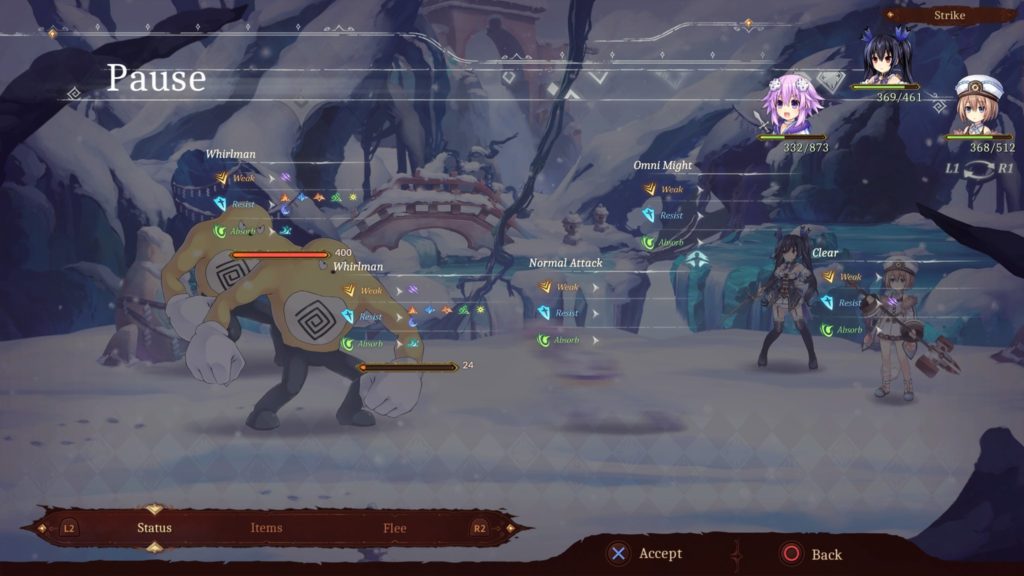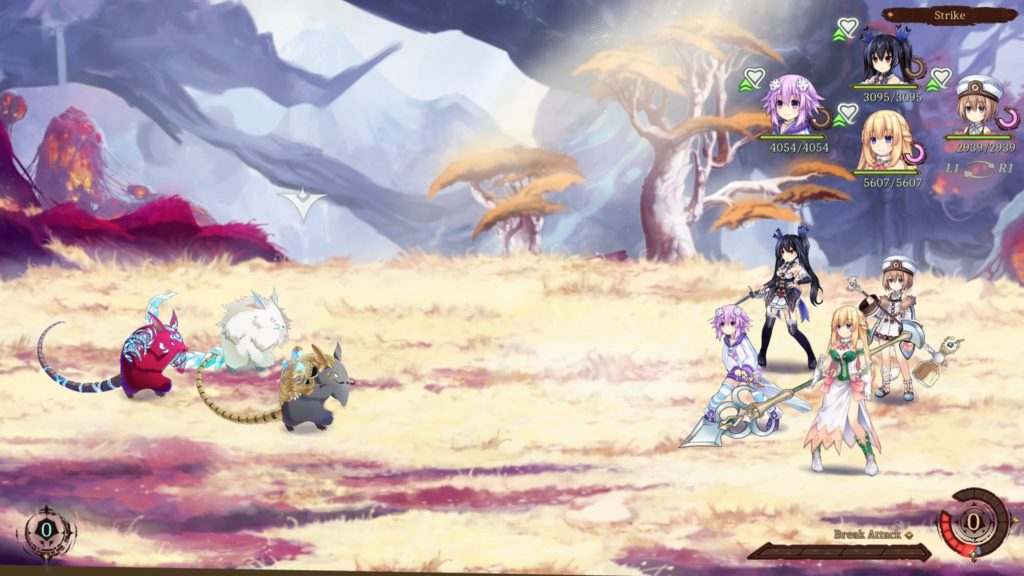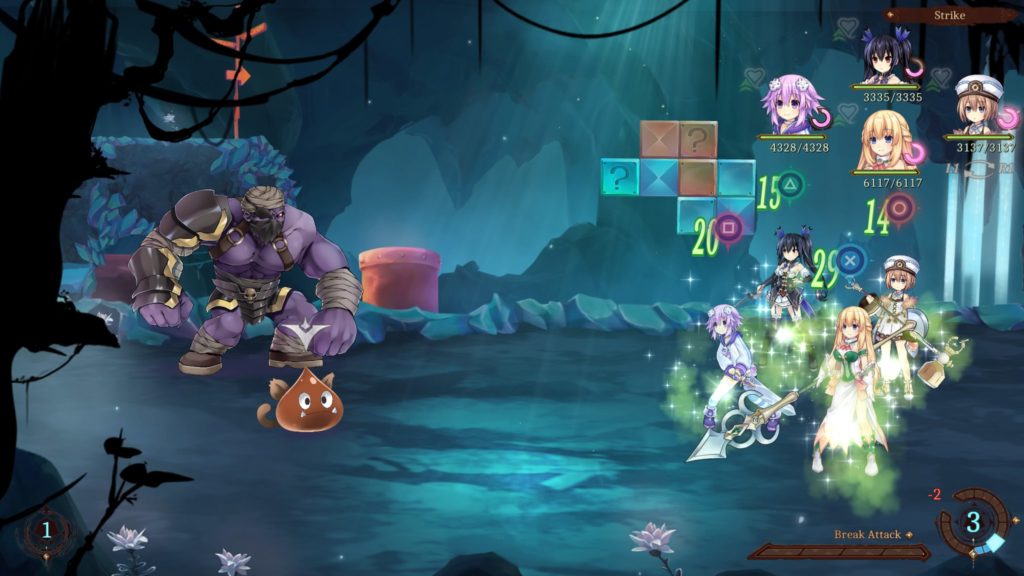- Genre: JRPG
- Platform: PS4
- Also Available On: Switch, Steam
I’ve played a bunch of the Neptunia games, and they’re always a nice breather from my typical run of titles. They tend to take a known genre, craft a story around it that makes fun of the genre, and still manage to make a game that more often than not is shallow, but fun. Unsurprisingly, Super Neptunia RPG is more of that style. In this case, they take the 2D overworld movement of something like Muramasa, give it a battle system like any normal 2D JRPG, and manage to spit out a game that works, even with some grinding flaws. In this case, the Neptunia gang get transported to a place in which 3D games are banned, and the entire world is now 2D – and that’s about as serious as this series is ever going to be.

Combat is the real focus here, and the entire flow of the game is built around the combat system. The closest description I can come up with is basically this: take the ATB system from SNES Final Fantasies, apply that to your entire party so they share the pool, and have the weakness exploiting of Shin Megami Tensei recharge your ATB pool if you land a weak hit. That combination of mechanics basically has the game working in vastly different ways depending on whether you’re in a trash or boss fight.
For trash fights, the name of the game is completing the battle as quickly as possible by exploiting as many weaknesses as possible. Hit the weakness, keep your ATB, and immediately spam the next attack. By doing this, you can generally complete any weakness-focused battle in seconds. However, this does have a significant problem in the late game.

Near the end of the game, a lot of the enemies simply stopped having weak points. Any trash fight without weak points plain and simply sucked. Your attack numbers were never really high enough to do large chunking damage on their own, and the ATB meter charging isn’t super fast. Because the meter is shared amongst the entire party, you’re never in a situation in these kinds of fights where you can attack with multiple people. The enemies themselves were generally never dangerous enough to make a risk/reward interesting in whether or not to save ATB charges, so the fights simply dragged out. My tendency ended up being to run from fights without weaknesses, avoid entire regions of battle, and then go to areas with known weaknesses to grind if needed. It just dragged the pace of the last 3-4 hours so much that I wish they’d have balanced the weakness system better to have it be used always at a cost of not being as powerful.
On the other hand, bosses generally had no weaknesses, but were often dangerous, so the risk/reward of saving ATB charges really came into play here. More often than not, I was saving nearly a full meter within a boss fight, then activating either a full attack combo, or some mix of buffs, heals, and spot attacks. This slowed the pace of the fights way down, but also brought them into a place where the strategy more typical of a JRPG was really combing into focus. I wouldn’t say the bosses were ever all that hard, but they were definitely the more interesting of the fights even without exploiting the weakness setup.

Luckily, non-battle gameplay was also fairly entertaining. The traversal mechanics and level setup are basically a straight rip of the Vanillaware-style 2D game. Visually, the game has the same sort of hand-drawn-ish, but still very smooth Flash animated characters. The backgrounds are all super colorful with a bunch of parallax layers to fill out the scene. Movement is fast, and with the right amount of exploration you’ll find hidden items or entire hidden areas. As you play through the game, you end up earning more traversal abilities, so going back and revisiting areas has added benefits. If the combat had been in real-time, this would easily have fit in against Odin Sphere or Muramasa, even if it wouldn’t be anywhere on the level of seriousness of those games.
There’s also a bunch of added depth simply in gearing your squad. This game takes the modern Tales of approach of adding acquireable skills to gear, and once earned the skills can be permanently equipped. Their weapons are unique equips, but accessory gear is often shared between party members. In this way I was always playing a balance between finding skills that fit the character’s strengths, while also trying to rush skills that I knew would be beneficial to the entire party. As an example, by end game I’d earned a permanent HP refresh (1% heal per ATB bar generated) across my entire party, so rather than having to have a dedicated full time healer, I was able to craft my party into a mixed physical/magical damage rush party with only weak heals to fill out during burst damage times.
All that being said, there’s really not a whole lot of depth to the rest of the experience. The gameplay is all solid, but the game is less than 20 hours long. There’s definitely a lot of side quests, but they’re all of the gather x thing / kill y enemy variety. You could probably entirely ignore them and get by just fine. Even in combat, you could squeak by without paying any attention at all to the weakness system, although it would probably take a significantly longer amount of time to finish. However, as a breather between serious games this one really hit a good mark. It’s enough of a game to still be fun to play, strong enough mechanically to be interesting enough, and have a stupid enough story to let me just enjoy the comedy for what it is. Is this going to win any game of the years? Unlikely. However, it does exactly what it needed to do – be fun.
